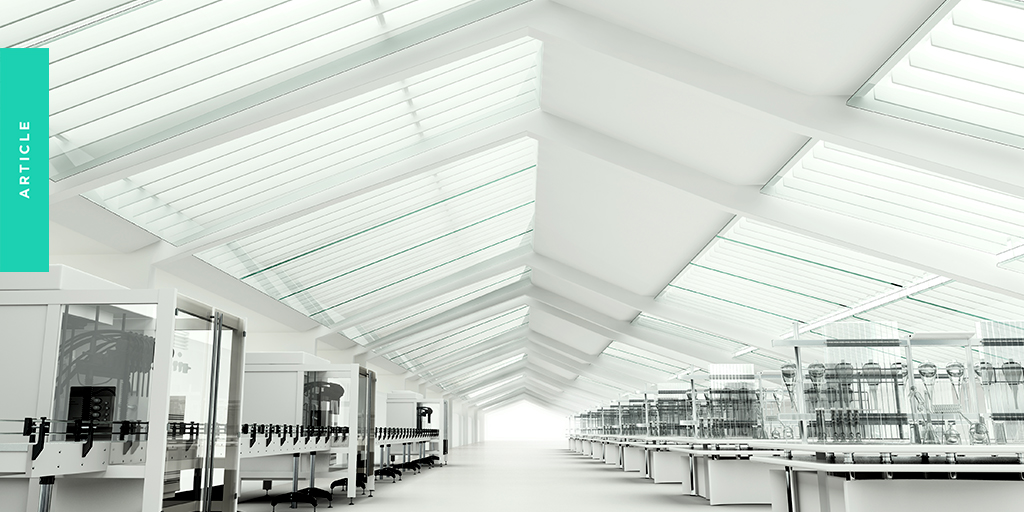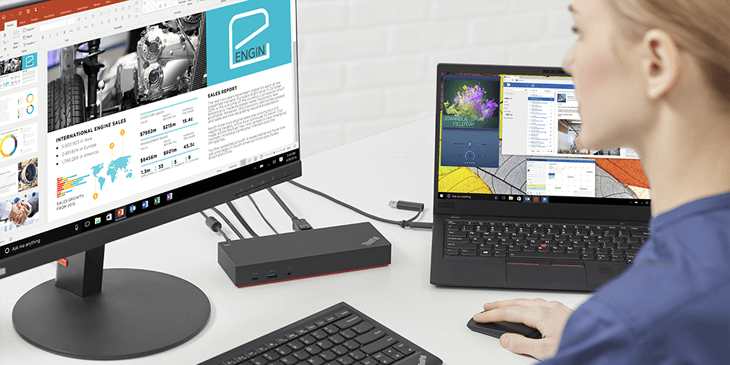Open Technology Ecosystems Are the Future of Manufacturing
Anyone who works in the manufacturing space can speak to the disconnect between the use of technology in their personal and professional lives.
“You walk into a plant manager’s office and he’s very proudly telling you about the Tesla that’s parked out there and how he can start it remotely and about his iPhone and this new technology, and you know, all the gadgets that you have — and you turn around and look at the plant and you see paper and antiquated technology,” said Gilad Langer, Industry Practice Lead at Tulip, at a recent Operations Calling™ conference.
There aren’t many people who can remember what the Internet looked like 10 years ago — this technology is moving and evolving so fast. Now compare that to the rate and speed at which manufacturing operations technology has matured over the last decade.
The problem here isn’t the lack of technology potential in the OT space. It’s that software vendors have historically aimed to address all of a manufacturer’s digital transformation needs on their own. The result? A stagnant landscape of walled gardens and inflexible solutions…with many manufacturers still blocked from achieving true digital transformation.
The simple fact is that no single solution can meet all of a manufacturer’s needs. Vendors need to start working together to solve the latest challenges facing frontline operations.
Open Ecosystems = The Key to Meeting Today’s Operations Needs
If you know the Tulip ethos in general, you know that the company takes a human-centric approach to frontline operations. This means putting the right tools in the hands of the people who are actually doing the work.
This Augmented Lean framework prioritizes empowering frontline workers over automating them away. By now it’s clear that automation alone will not solve all of manufacturing’s problems, but it still has a critical role to play in the modern factory environment.
The real challenge facing manufacturers is how you actually bring together real-time control and frontline process data. How do you combine humans and automation in very dynamic production environments?
During a recent chat at the Digital Factory conference, Blake Moret, Chairman and CEO of Rockwell Automation, pointed out that “to be able to have all the data that you need to make the right decisions, to route workflows in the right way, it’s gonna be a combination of manual work as well as the fixed automation that we’ve lived on.”
Manufacturing engineers can solve this problem. They have the necessary technology at their fingertips. But change has been blocked for years by manufacturing’s unique breed of technical debt and closed vendor ecosystems. Both the long-time players and the new kids on the block in manufacturing software are guilty of not working together to solve the challenges facing manufacturers.
It’s time for a paradigm shift in how manufacturing software vendors collaborate. We need to drive a culture change that focuses on integration and creating value for customers — and ultimately supports open source for manufacturing.
“It’s just plain arrogant to think that one company can do it all… and so the companies that win will have the flexibility — and I think the humility — to recognize they’re not going to know best in all cases,” Moret said.
Gone are the days of closed ecosystems. There’s a new tech stack for frontline operations — and at its core is a connected ecosystem that incorporates both new and legacy players, hardware and software.
How We Build the Ecosystem
An ecosystem approach might be new for manufacturing, but it’s table stakes in many other areas. Think about how your smartphone actually creates value in your daily life. It’s all about a connected architecture of apps and devices that let you do everything from order takeout to schedule an Uber pickup.
All of that value disappears in an instant if the various contributors to this ecosystem — from phone manufacturers to service providers to app developers — can’t interact seamlessly. It’s time to move toward that same level of openness in our manufacturing tech stacks by taking the following steps:
Embrace Open Standards and Protocols
Picture an open ecosystem that provides public APIs, learning resources, support standards, and more — creating a meaningful repository of tools and best practices. This level of openness will lead to unprecedented knowledge sharing across the industry, which will in turn drive more informed decision-making and continuous improvement. That’s the future we’re working towards.
Just as the scalable, non-proprietary TCP/IP protocols connected network devices to the Internet, the OPC UA framework and MQTT protocol are driving industrial connectivity and interoperability in the industrial space. The new manufacturing operations strategy is to leverage open source, open standards, an open platform, and open data models to build a future-proof tech stack.
Develop an Infrastructure That Seamlessly Connects the Old With the New
In order for an ecosystem approach to be successful, it needs to be omnidirectional — integrating systems and processes for everything from the shop floor to the top floor. And as operations are inherently physical, integrating software alone isn’t enough. One of the core principles of the new ecosystem is being able to integrate with the sensors, machines, and devices our customers already use.
We’ve moved beyond the era of an expensive, rip-and-replace approach to frontline operations software. With an open ecosystem, manufacturers can connect new solutions with legacy hardware quickly and seamlessly. This level of integration ultimately empowers them to increase their production visibility and make more informed decisions with real-time data.
As seen in examples from AWS, IBM, and other organizations, today’s blueprints for an operations architecture are open, modular, and adaptable.
Empower Manufacturers to Thrive Through the Digital Transformation Process
Manufacturers are under more pressure than ever to be agile and resilient — from meeting increasing demands for customization to overcoming ongoing supply chain disruptions. And we as software vendors need to follow suit.
Unlike traditional monolithic solutions that require manufacturing operations to fit their processes into the confines of the system, or invest in custom coding functionalities to reflect their evolving businesses, an open ecosystem of composable solutions empowers manufacturers to choose solutions that fit their processes — quickly integrating new, fast-changing technologies.
But as we enter this new era of manufacturing, it’s critical to remember that the human worker remains the most valuable asset. The way we can support digital transformation as an industry is to drive collaboration through an open ecosystem of sharable resources and solutions that serve to streamline citizen development — putting the right tools into the hands of frontline workers.
Need a little inspiration on how to drive holistic digital transformation? Look no further than the Stanley Black & Decker (SBD) site in Hermosillo, Mexico. This site has developed a true Augmented Lean culture focused on using technology to empower workers to drive digital transformation. Change happens from both the top down and the bottom up, including through a team of Lean Champions that act as change agents on the shop floor.
The Hermosillo site serves as a leader and model for other sites across the global SBD network; it should also serve as a model to all manufacturing companies aiming to revolutionize and augment their operations.
A Call to Action
Our new reality is that we have to rely on open standards, protocol, and collaboration to empower our customers to build their own unique, best-in-breed tech stacks. It will take an open and integrated ecosystem of technology and service providers to move industrial operations from siloed, paper-based systems to an Internet-enabled world.
Where do manufacturers start? By creating an integrated network of go-to-market and technology partners that work together to solve manufacturers’ problems. This is already in motion — with successful technology partners working together to offer fit-for-purpose manufacturing solutions for individual customers.
But this is just the beginning. We have our work cut out for us.
This article was written by Natan Linder from Forbes and was legally licensed through the DiveMarketplace by Industry Dive and provided by Extu.












